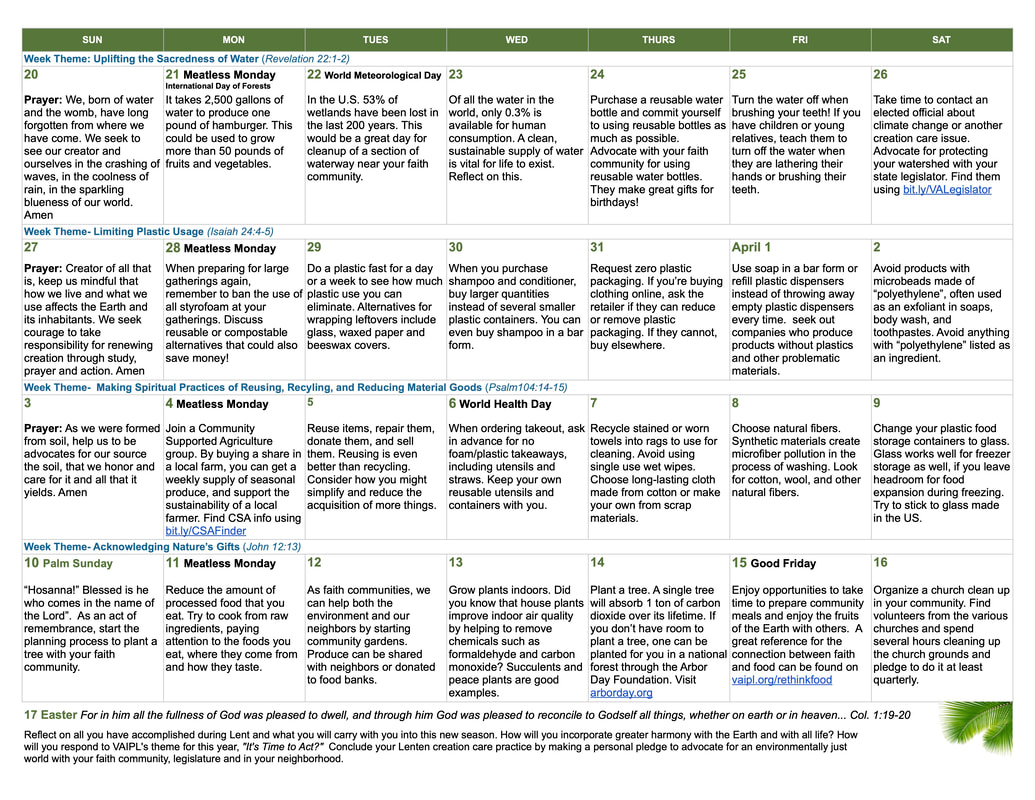Care for Creation Ministry has been offering monthly programs to educate us on issues related to Climate Change brought forward in Pope Francis’ encyclical, Laudato Si’. We feel certain that there are Saint Luke parishioners who are well qualified not only to join us in considering these issues, but to teach us about them. We believe that there are related topics you may care about, know about, and be willing to help educate us about. Here are seventeen we think warrant an evening or afternoon presentation and discussion. Please volunteer if you can help us plan for a presentation on any of these, and please suggest additional Climate Change topics of interest that you would like to help plan or present. Contact us at [email protected]. Thank you for helping all of us learn and talk about Climate Change.
Topics Worth Exploring as We Care for Creation
- The role of plastic pollution in the climate, biodiversity, and poverty crisis, and ways to reverse it
- The changing global and US outlook for fresh water supplies
- The current and potential expectations and impacts of sea level rise locally, in the US and globally
- The benefits, methods and mechanics of composting food and organic wastes
- How the Pope’s Seven-Year Laudato Si’ Action Plan is intended to work (and our role in it)
- The climate and environmental justice impacts of burning or preserving the Amazon rainforest
- The promise and problems of carbon-free nuclear power
- The outlook for electric vehicles (and their owners)
- Meat – How do we weigh nutrition, climate, and land-use impacts?
- The climate challenges and continuing need for natural gas use
- Promising new clean-energy technologies and why it’s hard to deploy them
- The perplexing economics of addressing climate change
- How our electric grid is changing and still needs to
- Climate change exacerbates global and local economic and societal inequities: how can we respond?
- Addressing the hardest-to-decarbonize sectors: air travel, heavy industry, cement, ocean shipping, truck transport and agriculture
- Local government responses to climate change
- Practical steps toward a zero waste lifestyle and a circular economy

